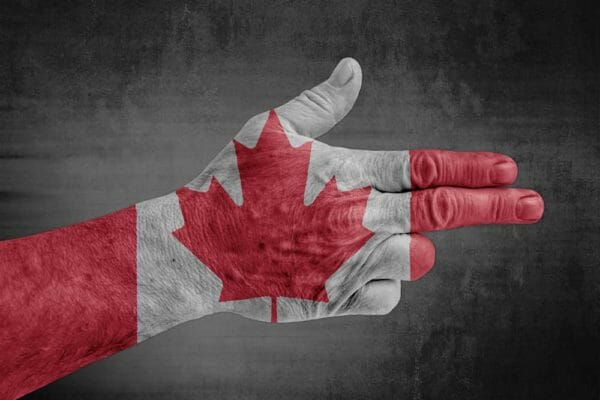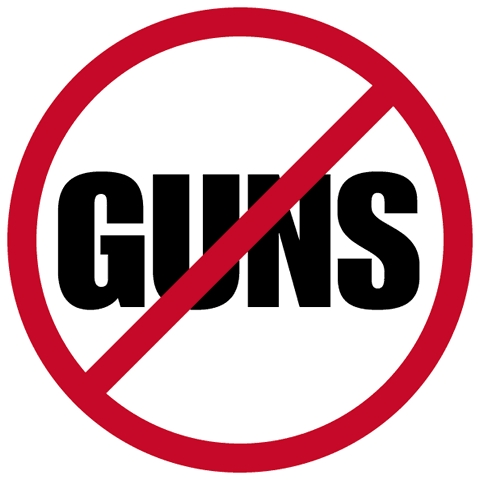Trudeau’s Gun Grab: Crime is Up, Gun Safety Training Down, as Number of Gun Ranges Drop
Opinion

In Canada, a ban on over 1,500 firearm makes, models, and variants, together with a mandatory government confiscation (“buyback”) requirement, was imposed by Liberal Prime Minister Justin Trudeau over four years ago.
Contrary to the representations as to the inherent deadliness of these guns and the urgency of ensuring these dangerous weapons were no longer available to ordinary citizens, the government had no plan on how to implement the law (and all indications are that it still doesn’t). The ban and buyback were coupled with an amnesty period, extended to October 2025, to protect owners of formerly lawful firearms from criminal liability for possessing them until the confiscation requirement was operational.
In announcing the ban, the Liberal government was emphatic that it was not intended to prohibit guns used for legitimate activities like hunting or sport shooting, but only those “designed for soldiers to kill other soldiers…guns that belong on a battlefield and not on our streets.” SOR/2020-96, the Order-in-Council (regulation) listing the newly-banned firearms, devices and parts, repeatedly stressed that the prohibited guns are those “primarily designed for military or paramilitary purposes with the capability of injuring, immobilizing or killing humans in large numbers within a short period of time given the basic characteristics they possess, such as tactical or military design and capability of holding a quickly reloadable large-capacity magazine. While some of these newly prohibited firearms were previously used by individuals for hunting or sporting purposes, it is the view of the Government that those firearms are unreasonable and disproportionate for such purposes.” The banned guns are “tactical and/or military-style firearms and are not reasonable for hunting or sport shooting.”
The government assurances, like its misleading terminology, were meaningless. The ban included ordinary semiautomatic rifles and shotguns used by responsible hunters, trappers, farmers, sport shooters and Indigenous Canadians.
A report prepared by the Ontario Federation of Anglers and Hunters (OFAH), for instance, examined previously non-restricted firearms prohibited under SOR/ 2020-96. It began by emphasizing a critical difference between “military vs. military-style” firearms. Prior to May 1, 2020, the firearms prohibited under SOR/2020-96 were, in fact, “available to civilians in Canada with the appropriate level of licensing required to own and possess them.” What most Canadians consider to be “military firearms” are fully automatic weapons using large capacity magazines; however, guns with a fully automatic action and “high capacity magazines” were already prohibited prior to Trudeau’s ban and unavailable for civilian activities like hunting and recreational shooting.
An OFAH survey cited in the report analyzed how a few of the previously non-restricted but now banned firearms had been used. Sixty-four guns (54 rifles and 10 shotguns) were identified by respondents as having “a wide variety of legitimate, lawful, highly regulated, and socioeconomically important uses, including but not limited to collection, hunting, protection of property (e.g., livestock), sport shooting, teaching firearms safety and skills, and trapping. Fifty-five (85.9%) of the 64 firearms were identified as being used for hunting prior to prohibition, with 44 (68.8%) identifying hunting as the primary use.” “The percentage of firearms identifying shooting sports (competition, target shooting/plinking, trap and skeet) as a use was even higher at 92.2% (81.3% as a primary use).” Guns like these, it seems, were the fundamentally “military or paramilitary” firearms that the Liberals claim their ban is restricted to.
Undermining the official “safety” rationale, another commentator pointed out that “of the 1,500 types of guns [Trudeau] banned that day through regulation, there was no history of gun crime with them. They were rifles and shotguns used for hunting and for target shooting, but the guns belonging to licensed owners were not the crime guns most people were concerned about.”
The most recent argument that the Trudeau government’s gun ban and confiscation plan was not aimed at true military or paramilitary firearms but was, instead, a wholesale attack on responsible gun owners and their property is a news report on the effect the ban has apparently had on shooting ranges.
Since May 2020, affected gun owners have been forbidden to use, transport, or transfer the banned firearms except in the very limited circumstances allowed for under federal law.
A Canadian gun-rights site, TheGunBlog.ca, states that in the four years following the ban and confiscation law, the number of government-approved shooting ranges in Canada has dropped by 36 percent. Despite the number of ranges remaining relatively stable between 2013 and 2019, the “country had 891 government-approved ranges in March 2024 compared with ‘approximately 1,400’ at the end of 2019, according to the Ottawa-based Royal Canadian Mounted Police.” “Shooting clubs and ranges are at the heart of gun culture and community as hubs to discover the joys of shooting, develop knowledge and skill, and socialize with other gun users,” and the steep decline “is the newest data showing the Liberals, assisted by the RCMP, are partially succeeding in their campaign to suppress gun culture.” The gun-rights site notes that other factors (COVID-19, rising costs, aging members) could be responsible, but adds that nonetheless, the Liberal government “targeted their newest confiscations at the most-active gun users: Recreational and sport shooters firing semi-automatic rifles (May 2020) and handguns (October 2022).”
While lawful gun owners remain permanently prohibited from using their banned guns, criminals, true to form, are uninhibited by legal niceties. A May opinion piece in Canada’s Globe and Mail newspaper observes that public safety hasn’t fared at all well since the ban was imposed. “[F]irearm-related homicide actually increased 23 per cent in Canada from 2020 to 2022,” and that “rates of firearm-related violent crimes… reached record levels in 2022. But that makes sense when most of the crimes committed with firearms are committed by those who obtain them illegally. Indeed, according to Statistics Canada, ‘the firearms used in homicides [in 2022] were rarely legal firearms used by their legal owners who were in good standing.’” Summing up the Trudeau policies on “military-style assault rifles” “(a made-up designation; he might as well called them ‘scary looking monster guns’),” the writer concludes that this “is another job well done for this government, if the job was making an announcement and then flailing aimlessly for the next several years.”
Indeed, little about the ban and “buyback” law suggests anything remotely based on evidence, care for appropriate terminology, or concern with addressing actual causes of crime.
A prescient May 2020 letter from OFAH to the government identified the potential for “unintended consequences” resulting from the law due to inadequate preparation and a possible lack of transparency as to intent. The “mismatch between the government’s stated intent and the outcomes of the amended regulations have fueled an already burning mistrust of government policy related to firearms.
Either the intent doesn’t match the outcome, because of unintended consequences resulting from a lack of robust regulatory consultation and adequate preparation, or the government’s intent has not been truly articulated.”
About NRA-ILA:
Established in 1975, the Institute for Legislative Action (ILA) is the “lobbying” arm of the National Rifle Association of America. ILA is responsible for preserving the right of all law-abiding individuals in the legislative, political, and legal arenas, to purchase, possess, and use firearms for legitimate purposes as guaranteed by the Second Amendment to the U.S. Constitution. Visit: www.nra.org
